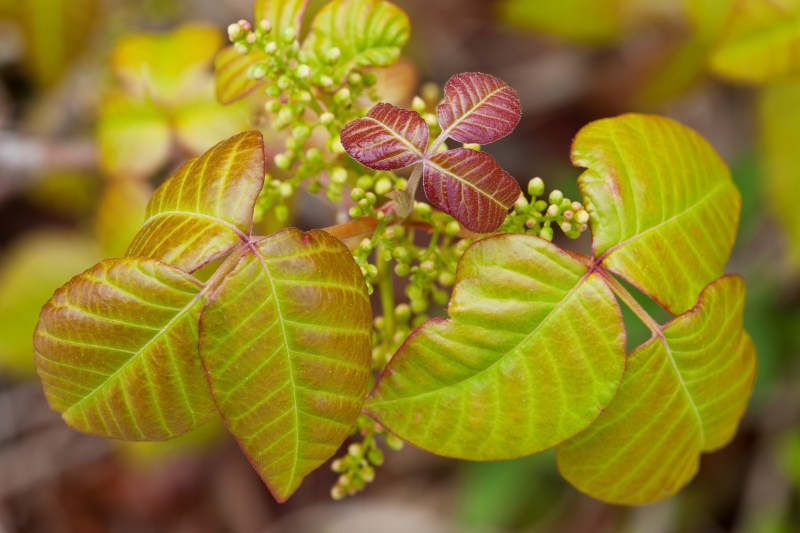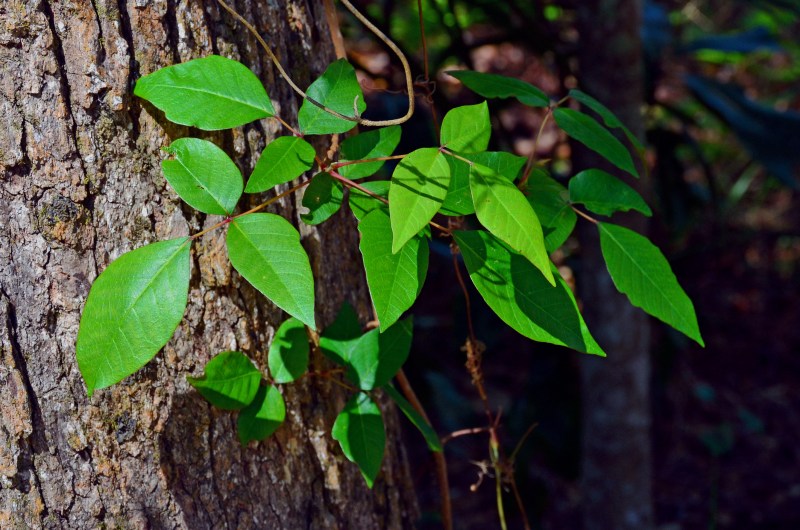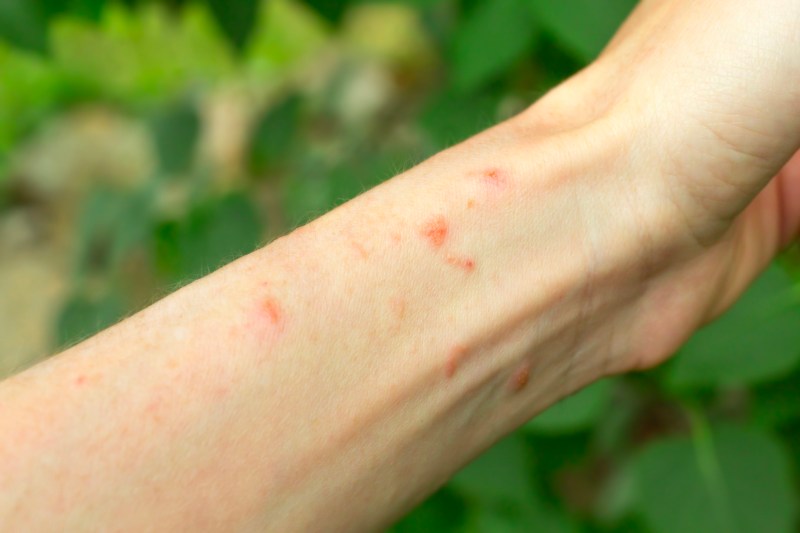
Poison ivy is a scourge to many, but not all. Though an unpleasant, itchy result after touching anything like poison ivy, poison oak, or even poison sumac has been drilled into the minds of many, it’s actually a misconception. All of those plants contain a type of oil, urushiol, which many people have an allergic reaction to. Not everyone reacts to the plant, though.
If you already know you are allergic you will rightly want to stay away from the plant, and if you’re unsure, you still should probably not chance it. That’s why it is very important to know what poison ivy looks like in all seasons so you can stay far away from all parts of the plant from the root to the leaves.
What Poison Ivy Looks Like

When poison ivy first arrives in the spring, it comes with a bright red warning sign. The leaves, which typically grow in clusters of three, are a bright red color. Usually, there will be some green under the leaves too either in the stems or in the tiny flower buds which turn white as they grow and bloom. By the time summer rolls around, the leaves will be completely green and can grow to be quite large. The leaves can also have deep ridges along their edges depending on where you live, to cloak themselves as other plants. So always remember to count the leaf clusters if you see a questionable plant.
By the time fall comes, the leaves change color again. This time they could be orange, yellow, red, or some combination of these colors. In winter, the leaves become solid red again before dying back and falling from the roots. If nothing but the roots are showing, it will look like a light brown hairy vine. So if you are outdoors, just keep away from the plant if it presents in such a way during any of these seasons.
Look High For Poison Ivy

Poison ivy can grow like a vine, too, and take over trees, structures, and more, so be sure to safely address it if it is growing on your house or somewhere in your backyard. While you’re less likely to touch poison ivy that’s growing high above your head, it is possible that you might clear it away by cutting it back and burning it. It is imperative that you do not burn poison ivy to kill it or get rid of the plant.
When poison ivy is burned, the oil is released into the air. There, the oil can be breathed in and cause an internal reaction. If this happens it typically results in difficulty breathing and can even require a trip to the hospital. Excessive symptoms on the skin can also require a trip to the doctor if they affect sensitive areas, cover a large swath of your body, or pop open with oozing pus.
How to Protect Yourself

Most poison ivy reactions just result in a red, itchy rash, blisters, or swelling and can last for two to three weeks. It typically takes 12 hours to two days for symptoms to develop, and the extent to which they appear depends on how much of the oil you were exposed to. To prevent this from happening, there are some things you can do in addition to identifying and staying clear of the plants.
Wear clothes that fully cover your skin such as long-sleeve shirts and long pants while in areas where there could be poison ivy plants. If you know that you or your pets have been exposed to the oil, you can wash with soap and water for up to an hour after the exposure to minimize the effects. Finally, you can also use a barrier cream similar to a liquid bandage to help protect your skin from interacting with the oil. So try these preventative methods to avoid an uncomfortable outbreak.


